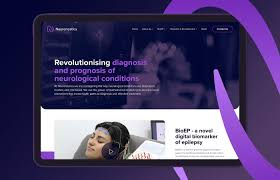The Importance of Website Design
Website design plays a crucial role in the success of any online business. A well-designed website not only attracts visitors but also keeps them engaged and encourages them to explore further. Here are some key reasons why website design is essential:
First Impressions Matter
When a visitor lands on your website, the design is the first thing they notice. A visually appealing and professional-looking website creates a positive first impression and instils trust in your brand. On the other hand, a poorly designed website can turn visitors away before they even read your content.
User Experience Is Key
A good website design focuses on providing an excellent user experience. This includes easy navigation, fast loading times, mobile responsiveness, and clear calls-to-action. A well-designed website ensures that visitors can find the information they need quickly and easily.
SEO Benefits
Website design also impacts your search engine rankings. Search engines like Google favour websites that are well-structured, user-friendly, and mobile responsive. By investing in good website design practices, you can improve your SEO efforts and attract more organic traffic to your site.
Brand Identity and Credibility
Your website is often the first point of contact between your brand and potential customers. A cohesive design that reflects your brand identity helps build credibility and trust with your audience. Consistent branding across all elements of your website reinforces brand recognition.
Competitive Advantage
In today’s competitive online landscape, having a well-designed website sets you apart from competitors. A modern and visually appealing website demonstrates that you care about your online presence and are committed to providing a positive experience for visitors.
In conclusion, investing in good website design is essential for the success of any online business. It not only attracts visitors but also converts them into customers by providing a seamless user experience and building trust in your brand.
Top Tips for Effective Website Design: Enhancing User Experience and Visual Appeal
- Ensure your website is mobile responsive for optimal viewing on different devices.
- Use high-quality images and graphics to enhance visual appeal.
- Keep the layout clean and uncluttered for easy navigation.
- Choose a colour scheme that complements your brand and is visually pleasing.
- Include clear call-to-action buttons to guide visitors on what to do next.
- Optimize loading speed by compressing images and minimizing unnecessary plugins.
Ensure your website is mobile responsive for optimal viewing on different devices.
Ensuring that your website is mobile responsive is crucial for providing an optimal viewing experience on various devices. With the increasing use of smartphones and tablets, it is essential that your website adapts to different screen sizes and resolutions. A mobile-responsive design not only improves user experience but also boosts your site’s SEO performance, as search engines like Google prioritise mobile-friendly websites in search results. By prioritising mobile responsiveness in your website design, you can reach a wider audience and enhance engagement across all devices.
Use high-quality images and graphics to enhance visual appeal.
Using high-quality images and graphics is a crucial tip in website design to enhance visual appeal and engage visitors effectively. Compelling visuals not only make a website more aesthetically pleasing but also help convey brand messaging and evoke emotions. By incorporating visually appealing elements, such as crisp images and eye-catching graphics, businesses can create a memorable user experience that leaves a lasting impression on their audience. High-quality visuals can elevate the overall look and feel of a website, making it more attractive and inviting for visitors to explore further.
Keep the layout clean and uncluttered for easy navigation.
When it comes to website design, keeping the layout clean and uncluttered is essential for easy navigation. A clutter-free design not only enhances the visual appeal of the website but also helps visitors find what they are looking for quickly and efficiently. By simplifying the layout and organising content in a logical manner, users can navigate through the site with ease, leading to a more positive user experience overall.
Choose a colour scheme that complements your brand and is visually pleasing.
When designing your website, it is essential to select a colour scheme that complements your brand identity and appeals to your target audience. The colours you choose can evoke specific emotions and convey messages about your brand’s personality. A harmonious and visually pleasing colour palette not only enhances the overall aesthetics of your website but also helps in creating a cohesive and memorable brand image. By carefully selecting colours that align with your brand values and resonate with your audience, you can create a visually engaging experience that leaves a lasting impression on visitors.
Include clear call-to-action buttons to guide visitors on what to do next.
Including clear call-to-action buttons on your website is a crucial tip for effective website design. These buttons act as signposts, guiding visitors on what steps to take next. Whether it’s encouraging them to make a purchase, sign up for a newsletter, or contact you for more information, strategically placed and visually appealing call-to-action buttons can significantly improve user engagement and conversion rates. By making it easy for visitors to know what action to take, you can lead them towards your desired goal and enhance the overall user experience on your website.
Optimize loading speed by compressing images and minimizing unnecessary plugins.
To enhance the loading speed of your website, it is crucial to optimise by compressing images and reducing unnecessary plugins. Compressed images reduce file sizes without compromising quality, ensuring faster loading times for visitors. Similarly, minimising unnecessary plugins helps streamline the website’s functionality, preventing excessive scripts from slowing down the loading process. By implementing these practices, you can create a more efficient and user-friendly website experience that encourages visitor engagement and retention.

